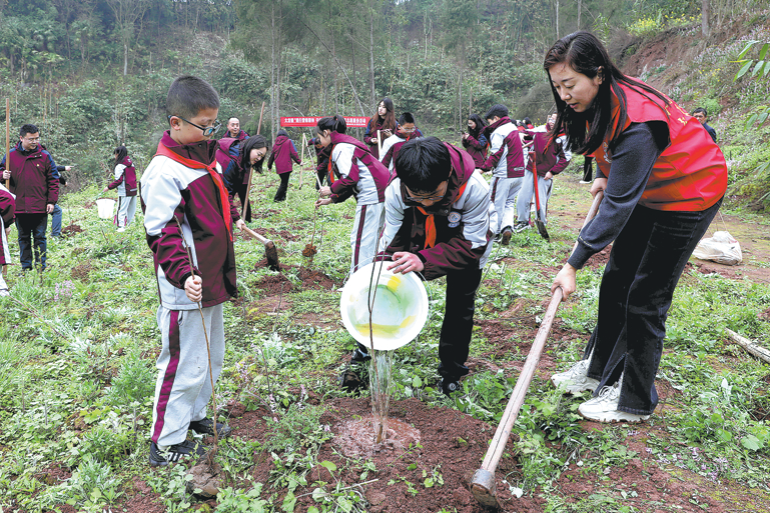A tribute to resilience


Touching a two-millennia-old fingerprint on a supine figurine inspires director to create an acrobatic production symbolizing how the past connects the present, Chen Nan reports.
Last year, when director Fu Zhitao first stepped into Emperor Qinshihuang's Mausoleum Site Museum in Xi'an, Shaanxi province, he was prepared to see history. He didn't expect to touch and feel it.
In the museum's conservation and restoration center, specialist Ma Yu guided Fu to a statue in a lying position, known as the "supine figurine", and pointed to a faint fingerprint that was pressed into its abdomen more than two millennia ago.
"At that moment, I felt shivers," Fu recalls. "It wasn't just terracotta anymore — it was a life. That fingerprint carried the breath of its maker across thousands of years, straight to me."
It was this fleeting yet powerful trace of humanity that became the inspiration for Fu's newest large-scale acrobatic drama, One Finger Across the Millennium, which premiered in Xi'an on Sept 4. The production brings together performers from the Shaanxi Acrobatic Arts Troupe and was commissioned by Emperor Qinshihuang's Mausoleum Site Museum.
Fu explains that the fingerprint became both a symbol and a method when he envisioned the stage production. "History often reaches us in fragments," he says. "But fragments are alive. They invite us to rebuild, to imagine, to connect. Acrobatics is exactly that — a physical way to reconstruct memory."
The plot follows three young men who were childhood friends, and whose paths diverged against the backdrop of the Qin Dynasty (221-206 BC). The story unfolds with a scene of a bustling market, where the young men discover and realize their dreams. One becomes a soldier, another becomes a craftsman, and the last one becomes a baixi (variety acrobatics) performer. Their fates, marked by glory, sacrifice and artistry, reflect the resilience of ordinary people.
























